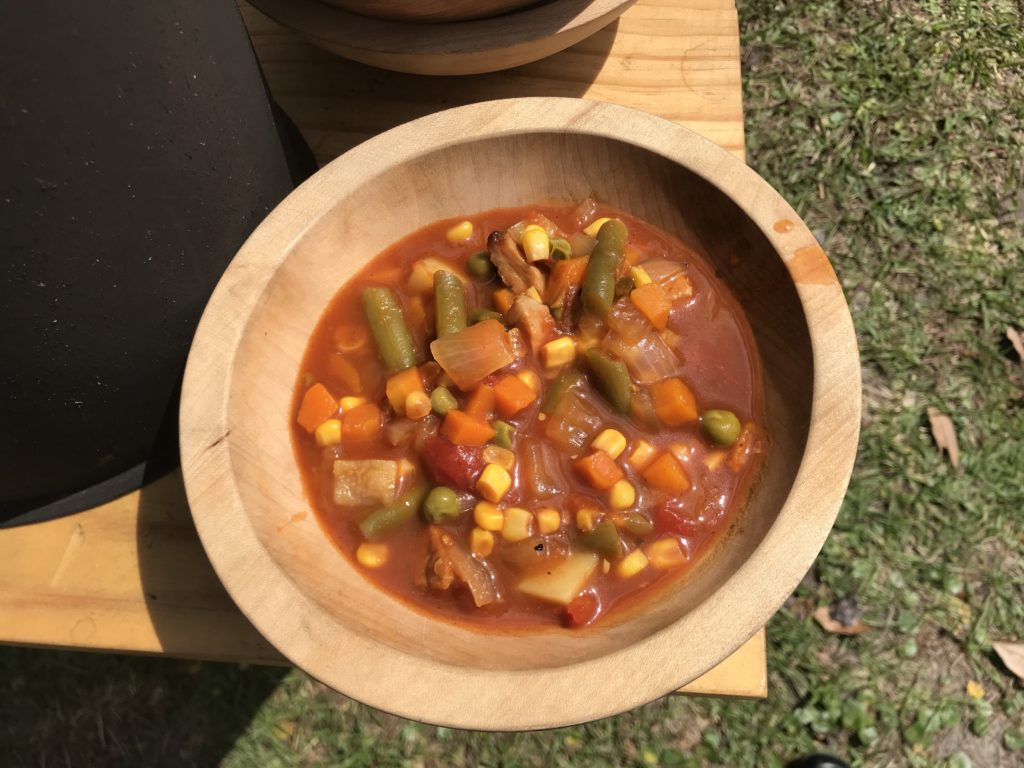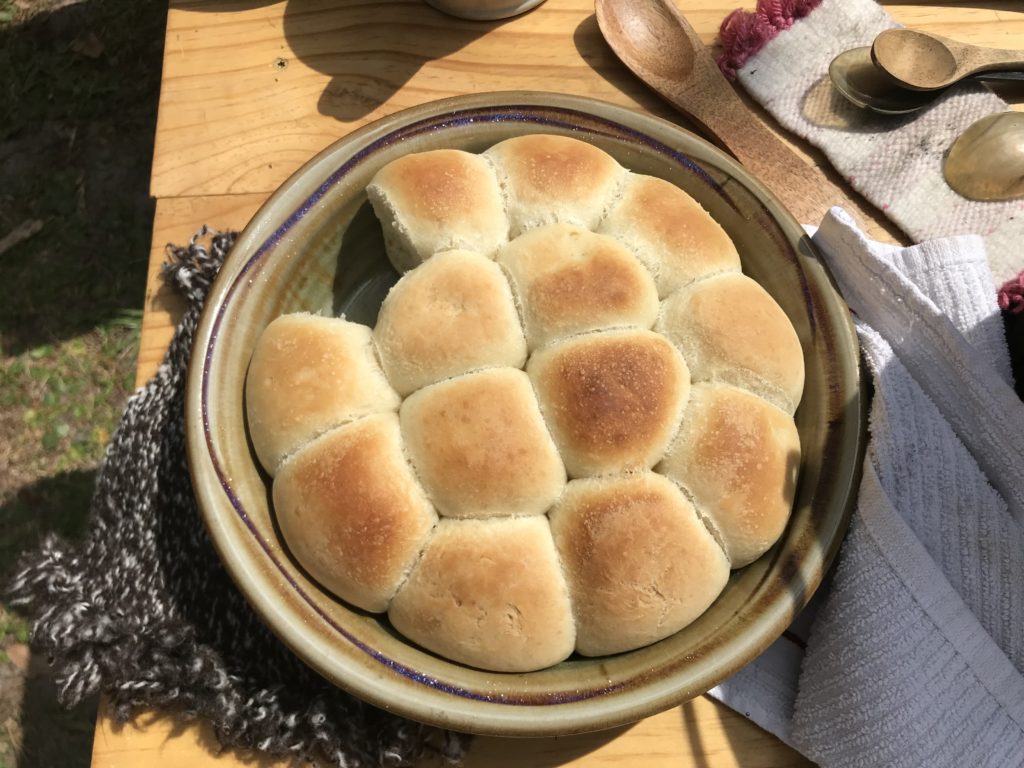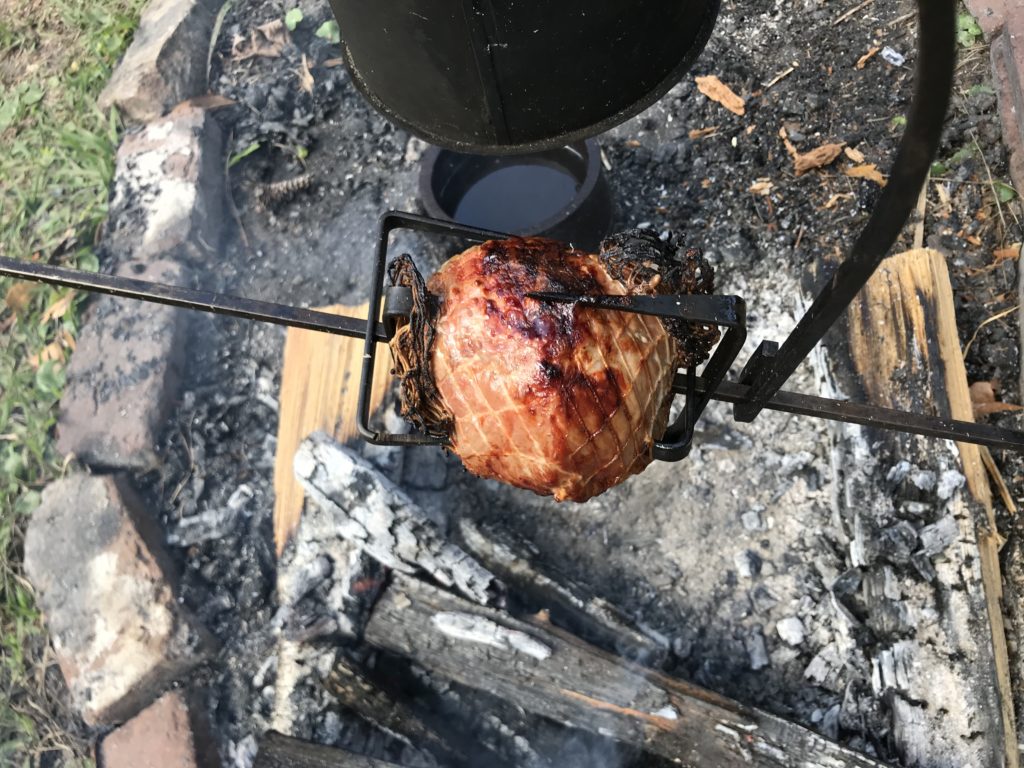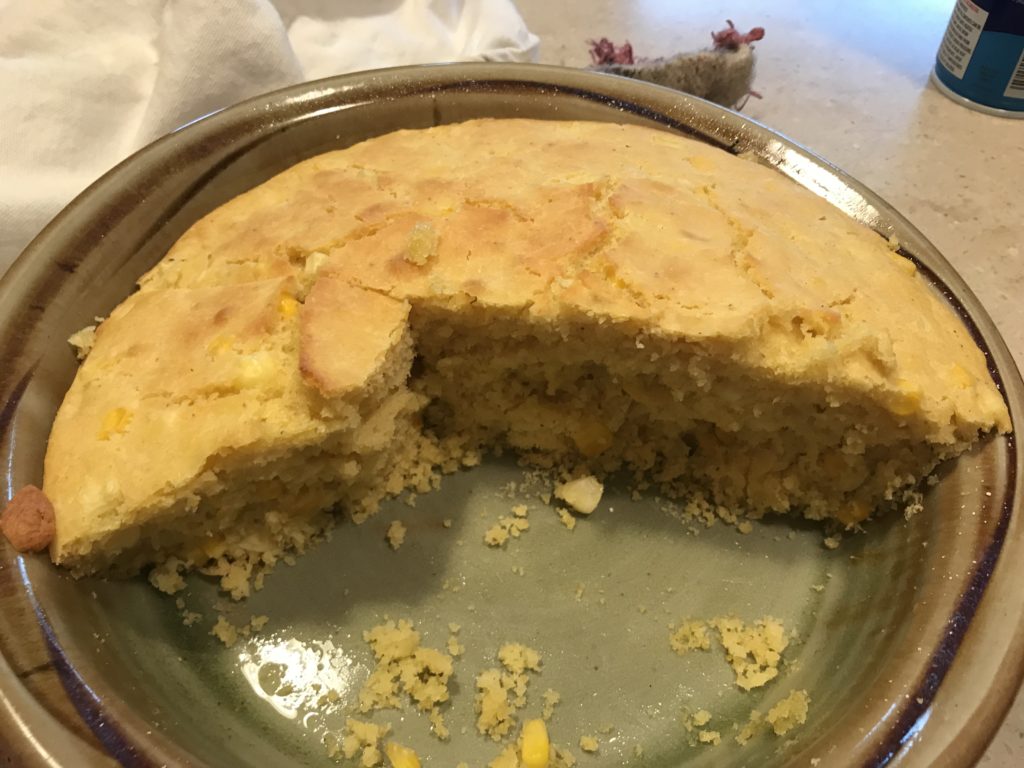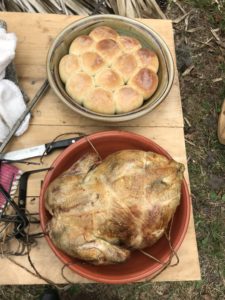
On Saturdays and Sundays, Tom and I do living history at Fort Frederica. We dress out in our historic outfits and do things like colonial people would do. Because it is only the two of us doing living history this year, we change what we do the two days. On Saturdays Tom blacksmiths and I cook and weave. On Sundays I do textiles (spinning, weaving, etc) and Tom cooks and does his soldier talk. Cooking is not the favorite demonstration for either of us, but it seems to be the one most interesting to visitors. Living History food is something that draws people off the sidewalk over to our campfire.
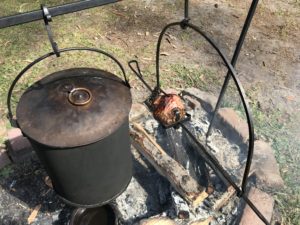
I’ve cooked colonial style at several parks. I started with simple dishes over the campfire at Kings Mountain and then graduated to a full-on colonial kitchen at Grand Portage. Here at Fort Frederica we include living history food we learned at both places. We are cooking over the campfire, but we have kettles, pots, skillets, and a baking kettle at our disposal. I have three staple dishes I rotate and Tom has been doing a pork roast every Sunday.
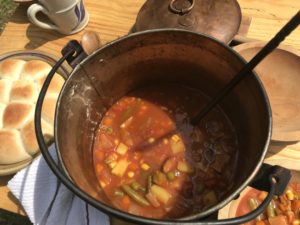
On my days I usually make a soup with cornbread or rolls. Sometimes I make bean soup and sometimes Brunswick Stew. Brunswick Stew isn’t entirely historical because a colonial cooks didn’t use tomatoes. Brunswick Stew has a tomato base. But not many people know that. The third dish I make is one that I learned at Kings Mountain. I simmer onions in a skillet until they are tender, then layer sausage and apples and molasses on top. The whole thing simmers until the apples are tender. I don’t have a good name for it, but it is a good living history food. Tom and Michael especially like it. Savory and sweet.
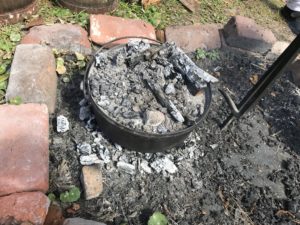
The baking kettle is a guest favorite. Modern day people call it a “dutch oven” but the colonial women here at Fort Frederica didn’t have an oven in their homes. They used the baking kettle with coals underneath and coals on top of the pan. When you place whatever you are cooking inside, it cooks in an oven-like atmosphere. I cook cornbread, rolls, and an occasional apple pie. Although I mix the cornbread from scratch, I use frozen Rhodes rolls dough for the rolls. By the time the coals are ready, the rolls thaw and rise. Everyone loves how the rolls look as they bake and how they smell when they are done.
Tom usually does a pork roast and rolls for his living history food. Last year he made a rotisserie and it works great with a little pork roast. We tried roasting chicken on the rotisserie a number of times but it never gets done in the middle. The little pork roast cooks great in a couple of hours.
Although cooking isn’t our favorite thing, we do it because it is interesting to our visitors. Seeing our living history food helps make history come alive for them.

